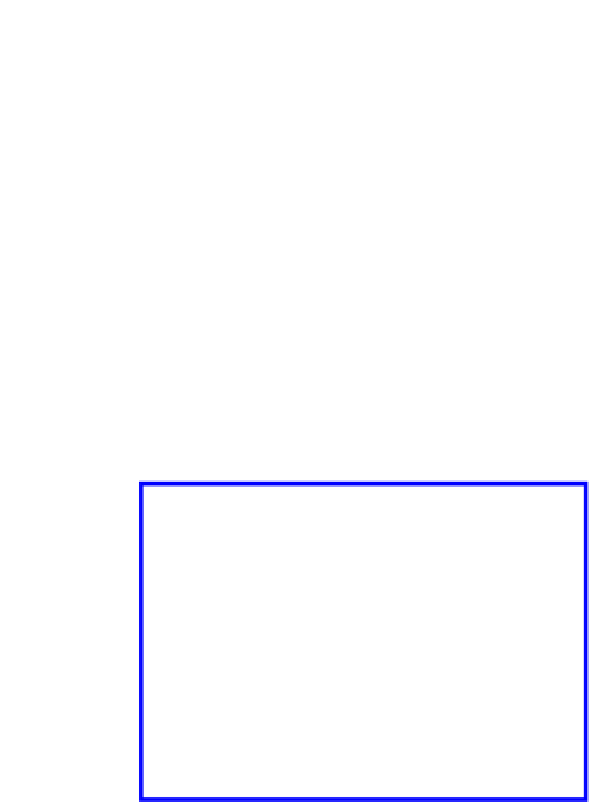Biomedical Engineering Reference
In-Depth Information
activation energies of hybridisation for SWCNT-adsorbed DNA.
In another study, molecular dynamics simulations showed that DNA
binds to the external surface of an uncharged or positively charged SWCNTs
within a few hundred picoseconds.
21
This result seemed in contradiction with
the previous study by Jeng, but only apparently, since the rapid interaction
of DNA with the tube was limited to a very small portion. More precisely,
Zhao
et al.
found that most of the hydrophobic sites of a DNA double helix
(dsDNA) were wrapped inside the helices and were not available for
interaction. Therefore, the dsDNA did not bind the nanotubes except for the
exposed hydrophobic base groups at the ends of the DNA segment (Fig. 5.6).
Conversely, hydrophobic groups of ssDNA needed more time to interact, since
they were all (not only the extremities) attracted towards the hydrophobic
surface of uncharged SWCNTs, while the hydrophilic backbone was exposed
to the aqueous environment. This also justiied why ssDNA binds SWCNTs
more tightly than dsDNA.
15, 22-25
Figure 5.6
Simulation of double-stranded DNA onto uncharged CNTs. Reproduced
from Zhao and Johnson
21
by permission. See also Colour Insert.
5.2.1.2
Supramolecular CNT-DNA complexes
The beneicial role of DNA towards carbon nanotubes has resulted also in the
possibility of eficiently integrating CNTs into multifunctional supramolecular
structures or devices, especially for their use in electrochemical sensors
26-28
by chemical incorporation of ssDNA chains for hybridisation with redox-
labelled complementary (cDNA) chains. An interesting structure has been
reported by Dai
et al.
,
29
who exploited the DNA hybridisation to realise
DNA-directed self-assembling of multiple CNTs and gold nanoparticles
(Fig. 5.7).
The successful realisation of the complexes formed was conirmed















































Search WWH ::

Custom Search